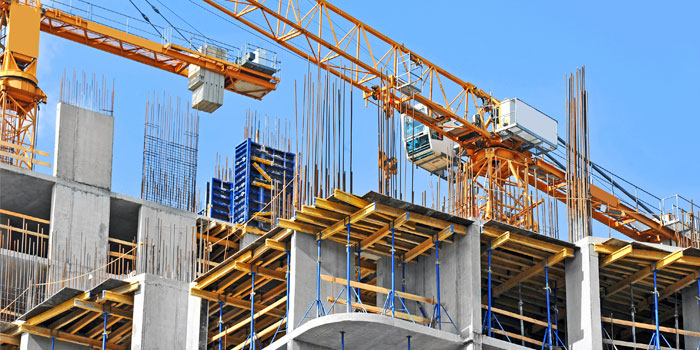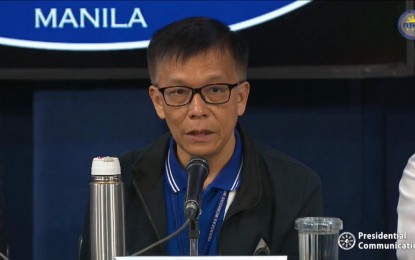Despite the planned liberalization of the construction sector, the government will still prioritize Filipino contractors in its massive “Build, Build, Build” (BBB) program, which is seen to require an additional 2.5 million construction workers up to 2021.
“To me, the local industry has a lot of players already. If we can allow the local players to prosper first and get a crack at the projects first, then we can produce a better breed of contractors and ensure employment,” Trade Secretary Ramon M. Lopez said.
He noted that there are about 10,000 local contractors that have secured accreditation from the Philippine Contractors Accreditation Board. This was in response to Socioeconomic Planning Secretary Ernesto M. Pernia’s announcement that sectors with foreign-participation barriers, including the construction industry, would be opened up in the upcoming Regular Foreign Investment Negative List.
‘Myth’
But DMCI Holdings Chairman and President Isidro Consunji said the idea that the domestic construction industry is closed to foreign participation is a myth rather than a reality, as local contractors are already being undermined in some areas.
“The government has been lenient in giving special licenses to foreign contractors where there is no local expertise involved,” Consunji lamented.
Moreover, government-funded infrastructure projects should still be governed by the 60-40 equity arrangement, Consunji said, as Filipinos should benefit from projects funded by their own taxes.
Keeping foreigners at bay
Construction Industry Authority of the Philippines (CIAP) Undersecretary Ruth B. Castelo clarified that the industry has the Quadruple A, or “AAAA,” license category to ensure protection for local contractors.
The Quadruple A license category allows new domestic corporations with foreign ownership of up to 100 percent to get a regular license, provided it has at least P1 billion in capitalization.
“That was a regulation for foreign contractors because we have a lot of contractors with smaller capitalization. We have a lot of SMEs [small and medium enterprises] in the industry, as well. We have more local contractors with P10 million. We don’t need P10-million investments from foreign contractors; we need the bigger investments in the country. We don’t want the small foreign contractors competing against small local contractors,” Castelo explained
Further, the CIAP chief said that with the deluge of Chinese-funded infrastructure projects in the country, Filipino contractors will already face participation barriers, so support for the local industry should be prioritized.
“It’s up to the Chinese partners, or their government, to allow participation because it’s their money. Of course, if it’s their money, they will have preference to choose the contractors they want,” Castelo pointed out.
Nonetheless, if these projects are somehow opened up to competitive bidding, Castelo said, the Department of Trade and Industry (DTI) will lobby for Filipinos to be given a chance to vie for the projects.
2.5 million more
Castelo said the BBB program will be needing as much as 2.5 million skilled and nonskilled workers in the construction industry, twice the number of workers currently employed in the business-process outsourcing sector today.
And to address the massive deployment of Filipino workers in the construction industry to better-paying countries, the private sector is mulling over a substantial increase in pay for workers in the sector.
Also, Castelo said that with the gaping need for skilled and nonskilled construction workers in the near future, the job-skills mismatch in the industry has to be addressed.
“The industry says we need around 2.5 million workers until 2020 or 2021, but this demand will diminish slowly as the projects are completed. We currently have 3.3 million workers in the industry, then we need another 2.5 million in addition to be able to meet the demand of this golden age [of infrastructure],” Castelo said in a chance interview with reporters at the Asean+6 Construction Forum.
According to Castelo, 70 percent of the 3.3 million workers in the construction industry are in the nonskilled sector, or those doing basic construction works.
The demand in the forthcoming infrastructure boom will still be in that category. However, the relocation of Filipino construction workers to other countries with better compensation poses another major hurdle.
To keep workers here, the DTI is studying—with the Department of Labor and Employment—to possibly increase the minimum wage of construction workers by P200 to P300.
“We’re studying [this proposal] initiated by the private construction industries. [Aside from the increase], we’re looking at a possible scheme to make workers stay for at least two years in the Philippines after their training,” Castelo said, noting the long-standing challenge of Filipino construction workers migrating to other countries after training.
With the count of the unemployed Filipinos at 10 million, the government official said the CIAP’s resources are being poured into training to ensure an adequate amount of workers in the industry.
“We’re doing massive training now; we’ve collaborated with the Tesda [Technical Education and Skills Development Authority] to do these. There are a lot of private construction companies, as well, that have their own training facilities, so we also encourage them to do parallel work,” Castelo added.































1 comment
“It’s up to the Chinese partners, or their government, to allow participation because it’s their money. Of course, if it’s their money, they will have preference to choose the contractors they want,” Castelo pointed out.
Really? we pay the loan with interest. Its our money so we should have the final say which contractor to chose from.